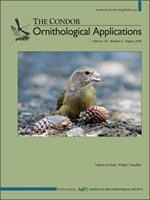The Western Atlantic population of Red Knot (Calidris canutus rufa) has undergone dramatic declines in recent decades and conservation biologists have sought to improve knowledge about the species' ecology in an effort to understand these declines. One major information gap has been the lack of a detailed understanding of range and habitat use during the breeding season, when the species is distributed sparsely across the Canadian Arctic. Airborne radio-telemetry surveys of Red Knots tagged in Delaware Bay, New Jersey, were conducted across the south and central Canadian Arctic, from Victoria Island in the west to Baffin Island in the east. Intensive field surveys were conducted on Southampton Island, Nunavut, over successive summer field seasons to locate nesting Red Knots and record characteristics of their nesting habitat. Maximum entropy modeling (Maxent) and geographic information system (GIS) data on environmental characteristics were used to predict Red Knot habitat suitability at 2 spatial scales: nesting site location suitability at the local scale across Southampton Island, and breeding habitat suitability (i.e. both nesting and foraging habitat) at a broader, regional scale across the south and central Canadian Arctic. Comparison of the local and regional scale models with independent validation data (i.e. occurrence data not used in the model calibration), showed both models to be useful predictors of habitat suitability. At both spatial scales, Red Knots were found to prefer sparsely vegetated tundra on sedimentary, primarily limestone, bedrock at elevations below 150 m. Our results suggest that it is highly unlikely that the availability of breeding habitat limits the population size of the subspecies. Regional scale mapping provides the basis for more precise geographic targeting of future survey efforts that will aid in the conservation and management of this threatened species.
How to translate text using browser tools
1 August 2018
Mapping and modeling the breeding habitat of the Western Atlantic Red Knot (Calidris canutus rufa) at local and regional scales
Richard G. Lathrop,
Lawrence Niles,
Paul Smith,
Mark Peck,
Amanda Dey,
Rachael Sacatelli,
John Bognar

The Condor
Vol. 120 • No. 3
August 2018
Vol. 120 • No. 3
August 2018
breeding habitat
Canadian Arctic
MaxEnt
nesting habitat
shorebird
Southampton Island
species distribution modeling




